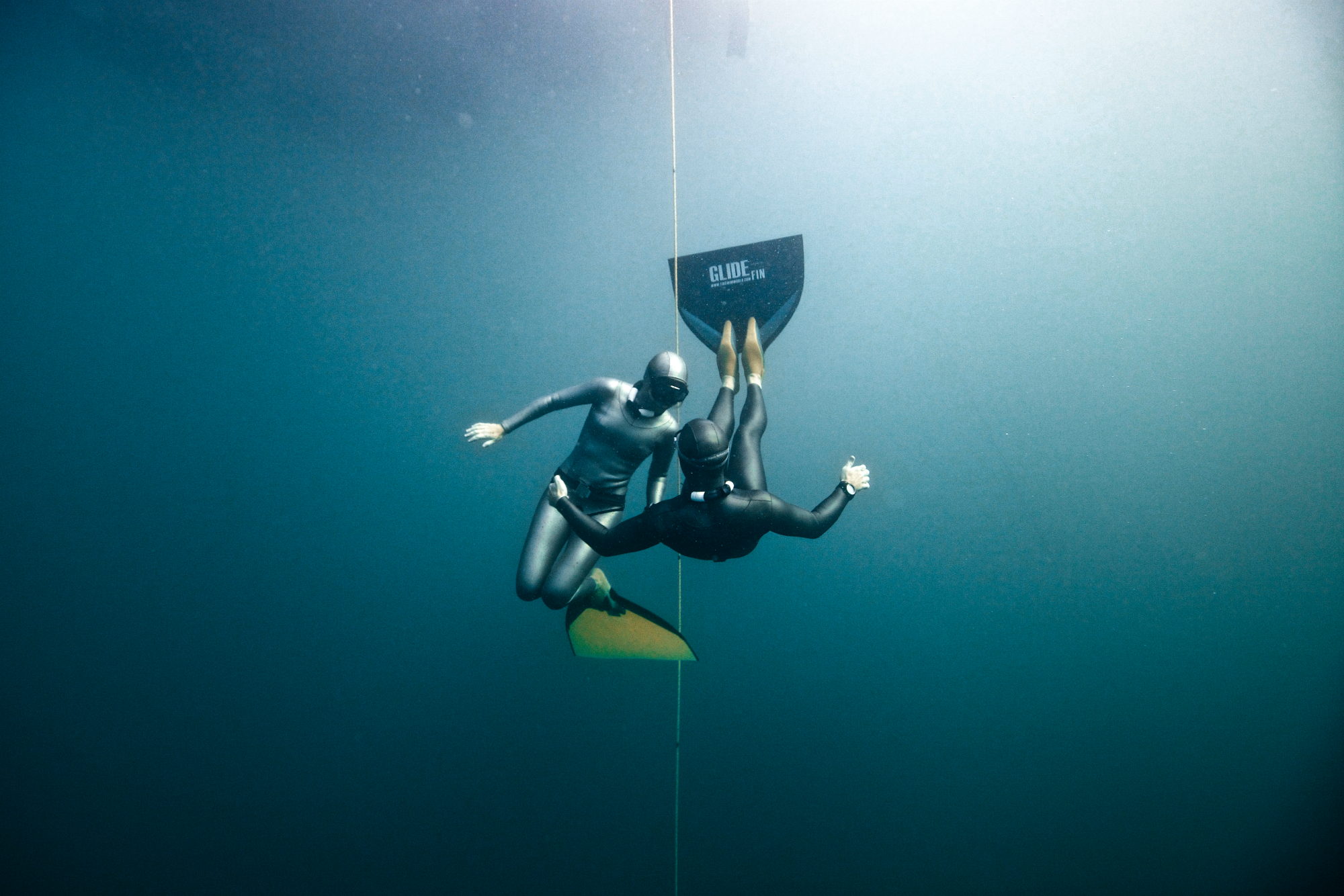Ear pressure
As a Freediver makes his descent into the sea, the pressure on the outside of the eardrum increases and as a result the eardrum is pushed inwards, often painfully. The diver uses “ear pressure equalization” techniques, to force air into the middle ear in order to “equalize” the pressure at both sides of the eardrum.
Body pressure
Imagine a CLOSED plastic container filled with air is slowly submerged in water. As water pressure increases around it, the container is soon or later forced to crush into itself. Now imagine our lungs as being that plastic container. But what happens when you Freedive? Clearly there is no extra air going into our lungs to equalize the pressures. For years, Doctors used to believe that if Freedivers go deeper than a certain depth, their lungs would “crush” and death would occur. But freedivers s proved them wrong. After further experiments and observations, it was found that a “blood shift” mechanism is present in the human body. As we go deeper in water, blood starts to “shift” from other parts of our bodies and begins to flood our lungs to equalize the outside water pressure. Our heart rate slows down and blood pressure increases.
Mammalian Diving Reflex and Bradycardia
This is an adaptation found on all diving mammals. It enables them to dive for extended periods under considerable pressure. Scientists have now proven that humans also possess this ability. Bradycardia is the most common manifestation of the mammalian diving reflex. Literally it means low (brady) heart beat (cardia). As soon as the brain detects that certain reflexes are immersed in water, it slows the heart rate. As the heart is made of muscular tissue, this reduction in heart rate in turn results in a reduction in the amount of oxygen required by the body.
Peripheral Vasoconstriction
If continually immersed in water, the body adapts still further. At deeper depths (i.e. higher pressure), the blood draws away from the peripheral areas of the body. In other words, the blood vessels in the toes, fingers, hands, feet constrict reducing the circulation of blood in these areas. The blood supply is drawn to the core of the body and the vital organs.

